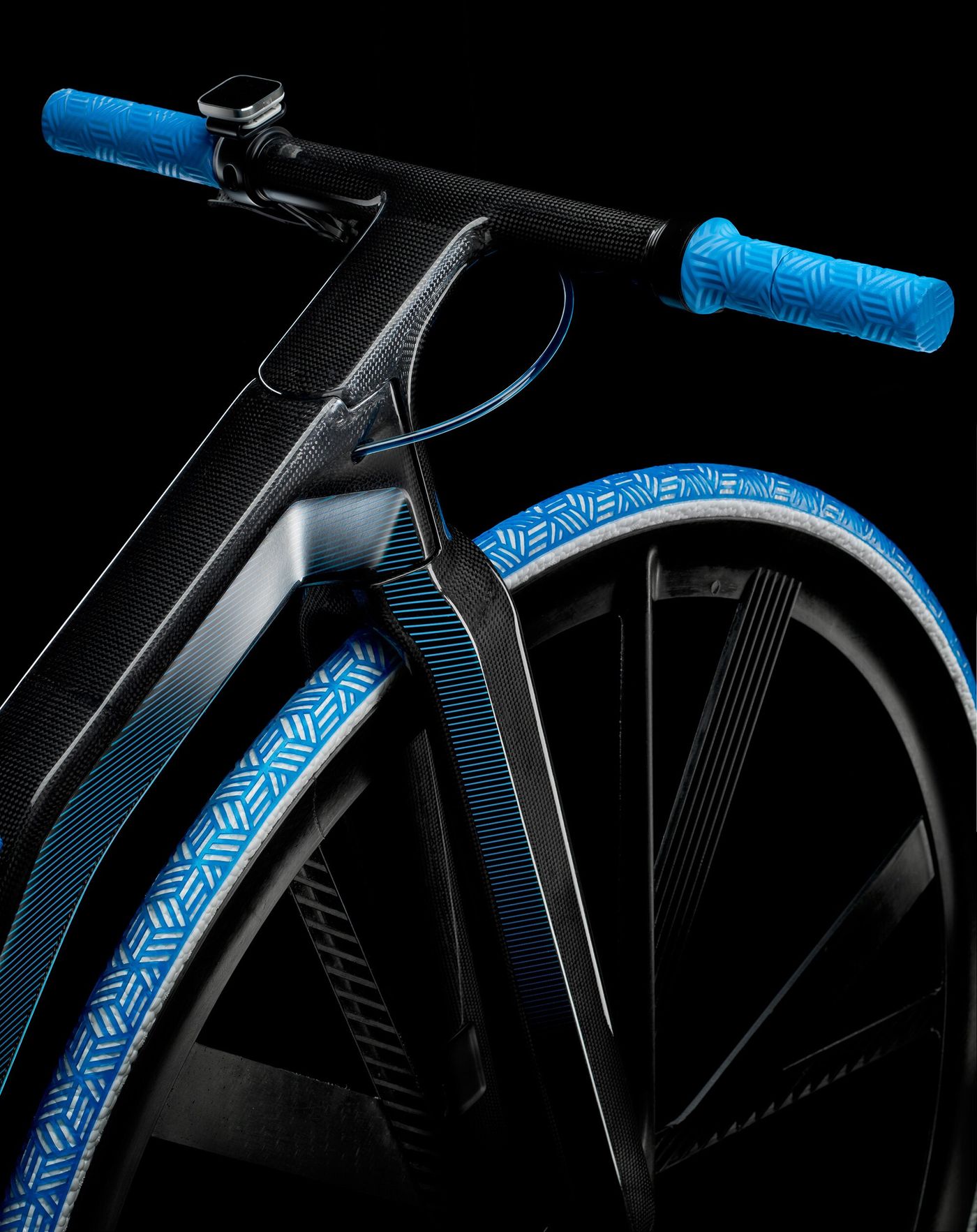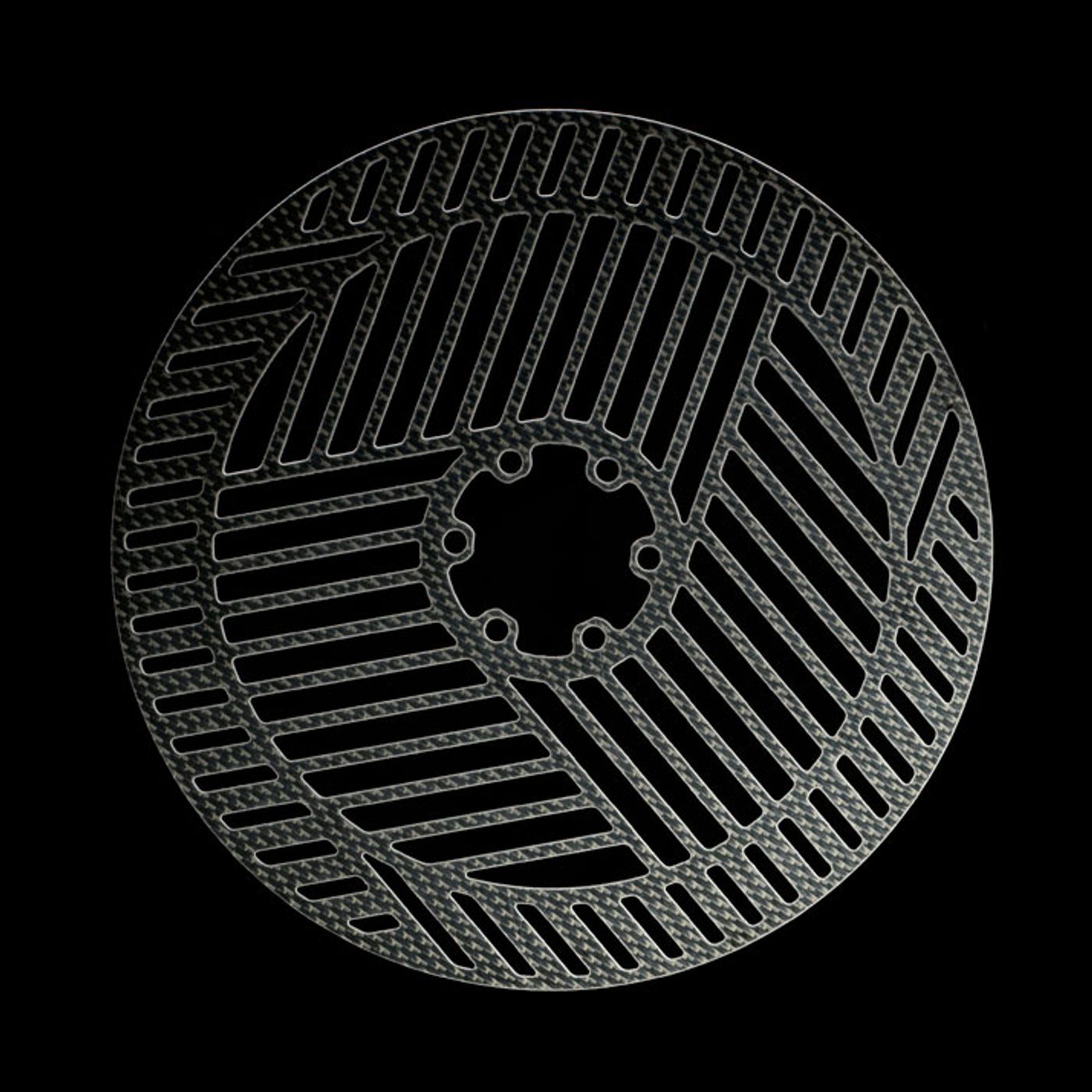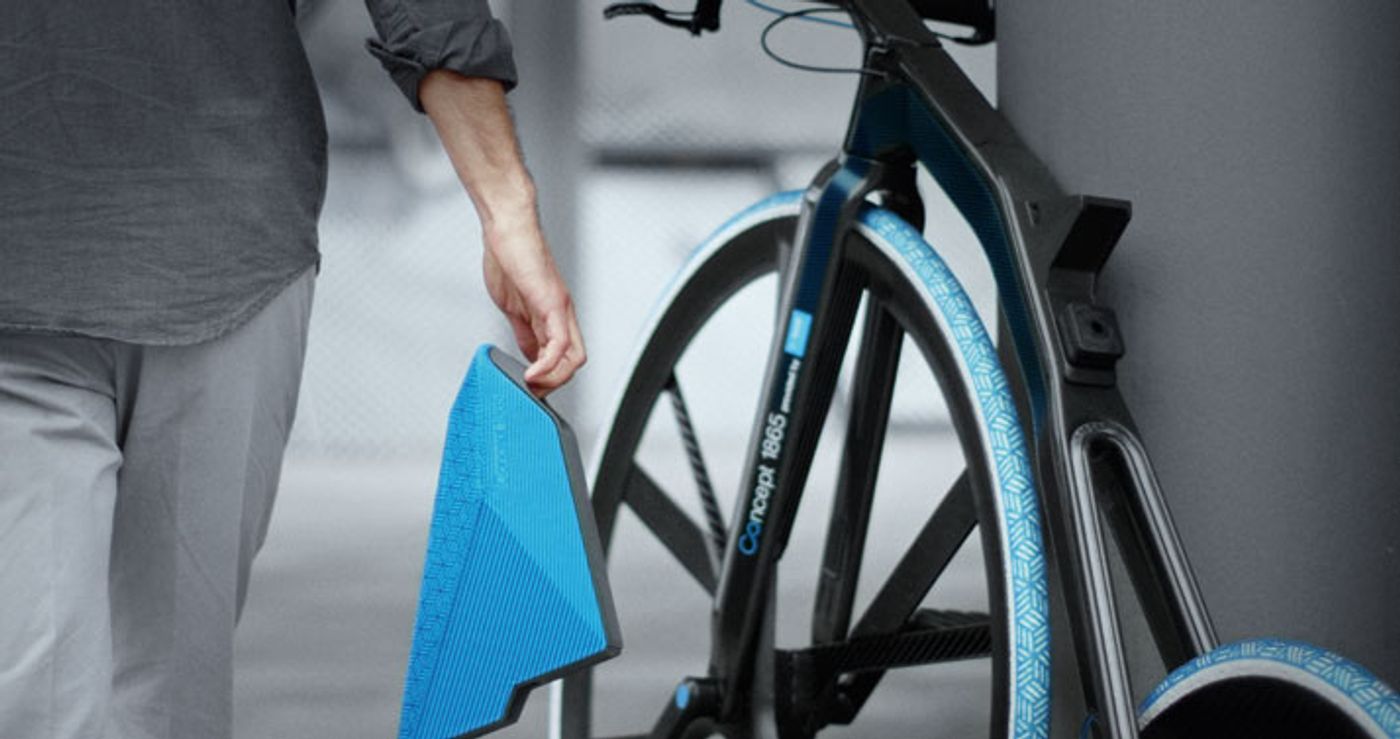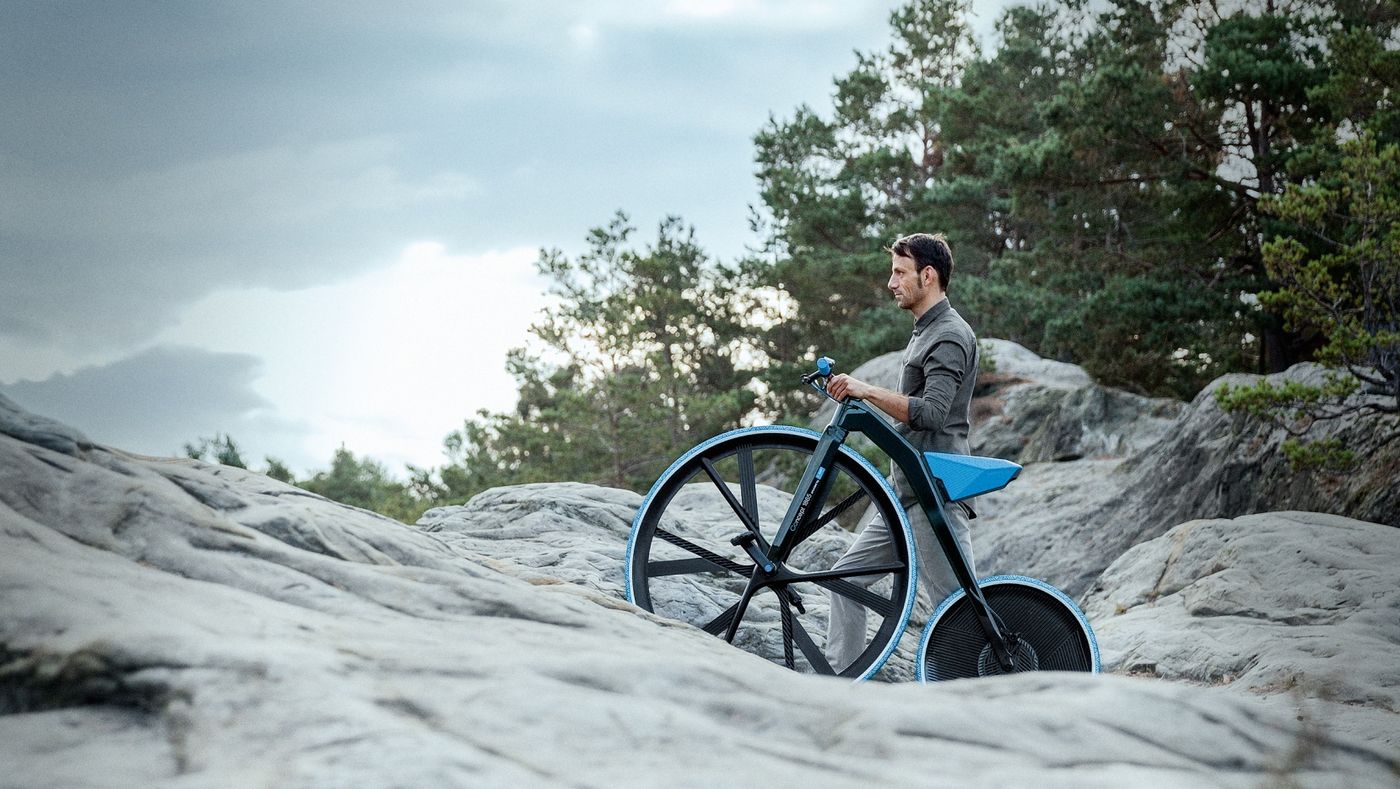
Rethinking Materials: The ''Concept 1865'' e-Velocipede By DING 3000
Words by Yatzer
Location
What would the first pedal cycle have looked like if the pioneers of the bicycle had today’s advanced materials to work with? In order to answer this question, BASF SE, the largest chemical company in the world teamed up with DING3000 design studio (Carsten Schelling, Sven Rudolph, Ralf Webermann) to develop the e-velocipede ''Concept 1865'', a ready-to-ride prototype with an electric drive. The prototype makes use of 24 of BASF’s innovative materials that are sure to come to the fore as electromobility advances (UltracomTM, Infinergy®, Elastollan®, Ultramid®, Ultrason®, Elastollan®, Kerdyn®, Ultradur® and Neopolen®, to name a few).
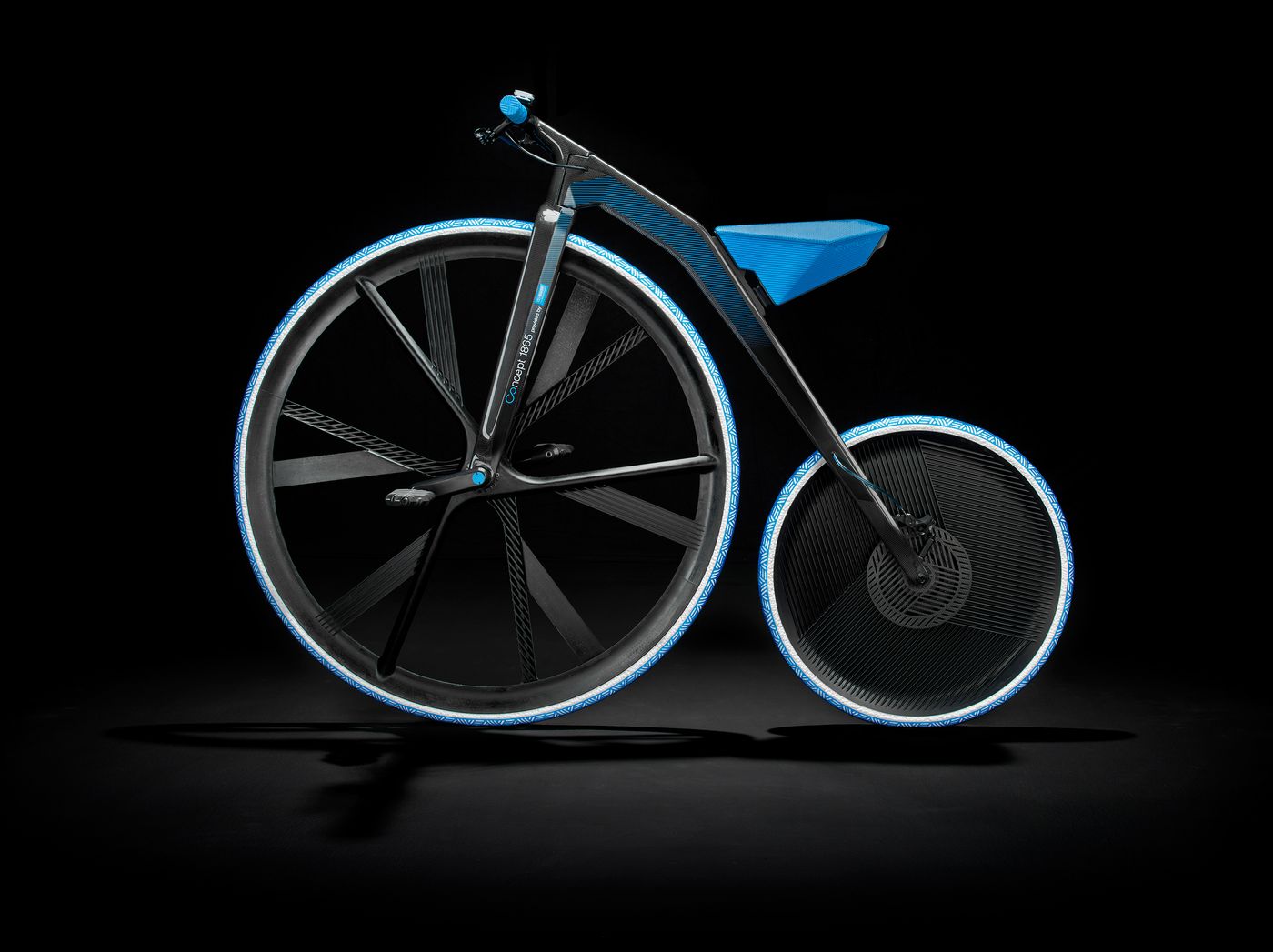
Concept 1865, photo © Rafael Kroetz.
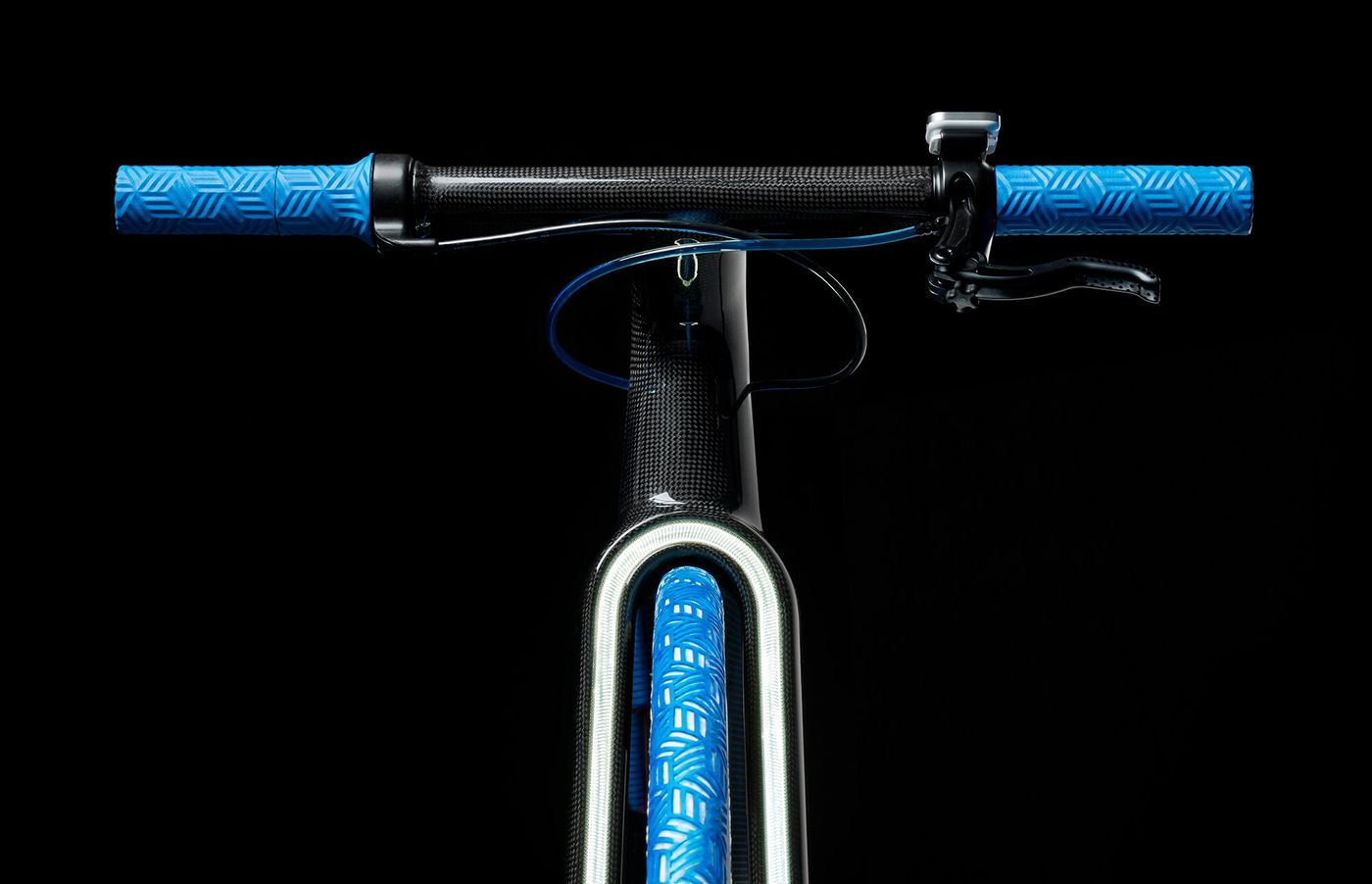
Handlebar, Concept 1865, photo © Rafael Kroetz.
The concept came about through a thought experiment and travels back in time to the year 1865, the year that the chemical company was founded and the wooden ''Dandy Horse'', invented by Karl Drais, was given its first pedals. Under the slogan ''Rethinking Materials'', the unusual e-bike invites customers to join BASF in developing new applications and product ideas utilizing advanced plastics and constitutes an invitation to question the status quo and create something new just as the pioneers of cycling did in their time.

''Concept 1865-Rethinking Materials''. Filmstill by Nord Nord.
[YatzerTip]: If you want to see the e-velocipede in action, watch the short film created by Jonathan Winkler and Felix Kahlo from Nord Nord studio.
DING3000 provided us with the astonishing story of the velocipede:
''…In 1816, the »Year without a Summer«, the harvest failed all over most of Europe. Because of the famine, many farmers were unable to feed their horses. It was therefore perhaps logical that in the heart of this disaster area, Germany’s south west, Karl Drais should invent a two-wheel »running machine« on which its user could propel himself, half running and half free-wheeling. The contraption known as the »Dandy horse« in the English-speaking world became very popular among younger members of the nobility, but soon gained a reputation as an expensive and dangerous leisure pursuit. The balancing involved was particularly hazardous. The authorities finally curtailed the advance of this technology with prohibitions. In Milan, London, New York and even Calcutta, the use of the Dandy horse was banned. Prohibitions held back progress for fifty long years. Only with the rise of industrialization in the last third of the 19th century did innovation again flourish. BASF first saw the light of day in Ludwigshafen am Rhein in 1865, and the bicycle made rapid progress at the same time. All the rage and a milestone in its day was the velocipede, a French pedal cycle with a crank on the front wheel. Thanks to the inspiring combination of muscle power and mechanical translation, these cycles gradually ushered in the age of individual mobility. It is not clear who invented this bicycle with the large front wheel. Pioneers of its popularization were Pierre Michaux and his son Ernest. In as early as 1861, father Michaux converted a Dandy horse into a pedal cycle. The breakthrough came finally in 1867 when Michaux unveiled the velocipede at the Paris International Exposition. With partners he soon founded Michaux & Cie and embarked on mass production. Bicycles soon increased in numbers and became affordable.’'
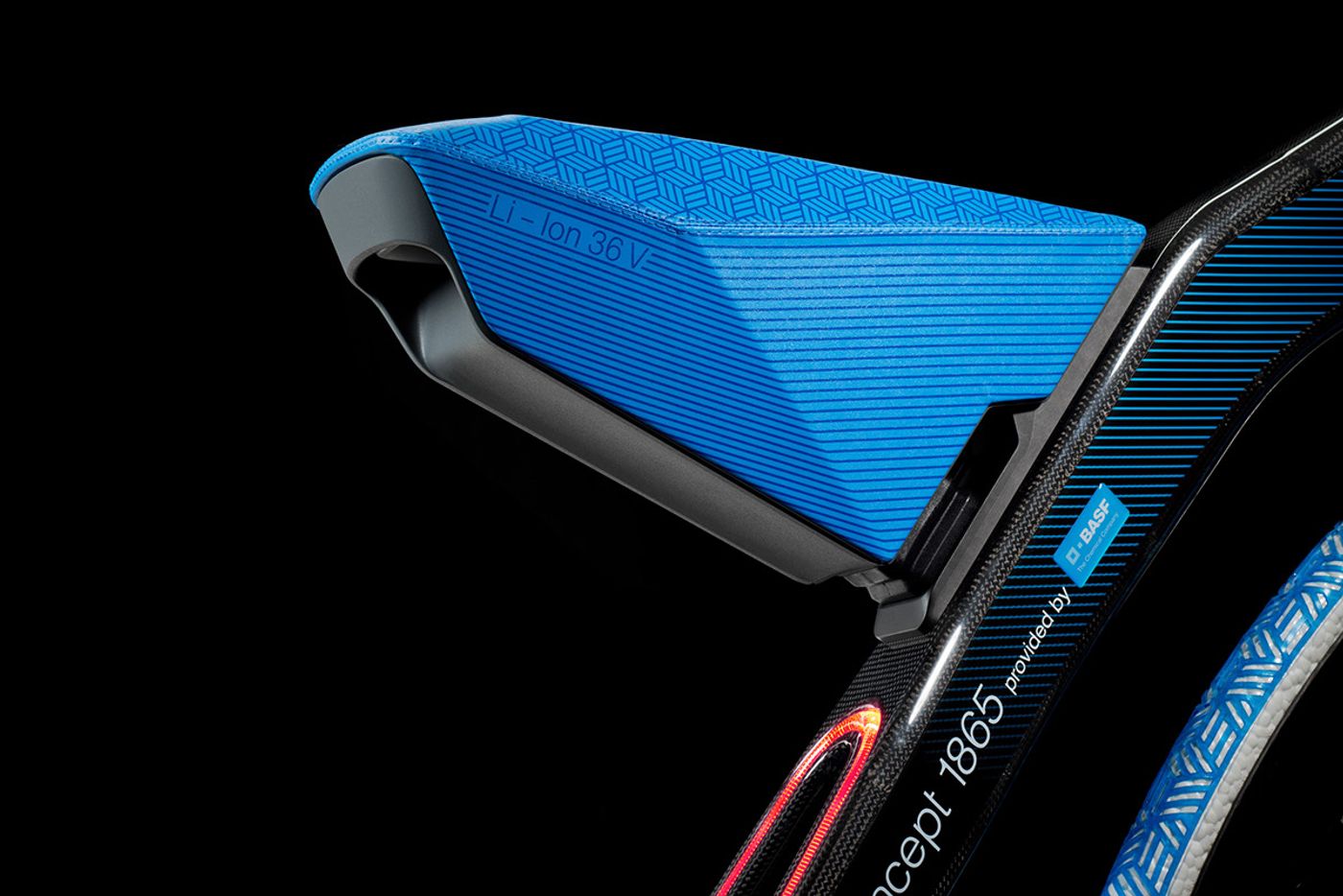
Saddle, Concept 1865, photo © Rafael Kroetz.
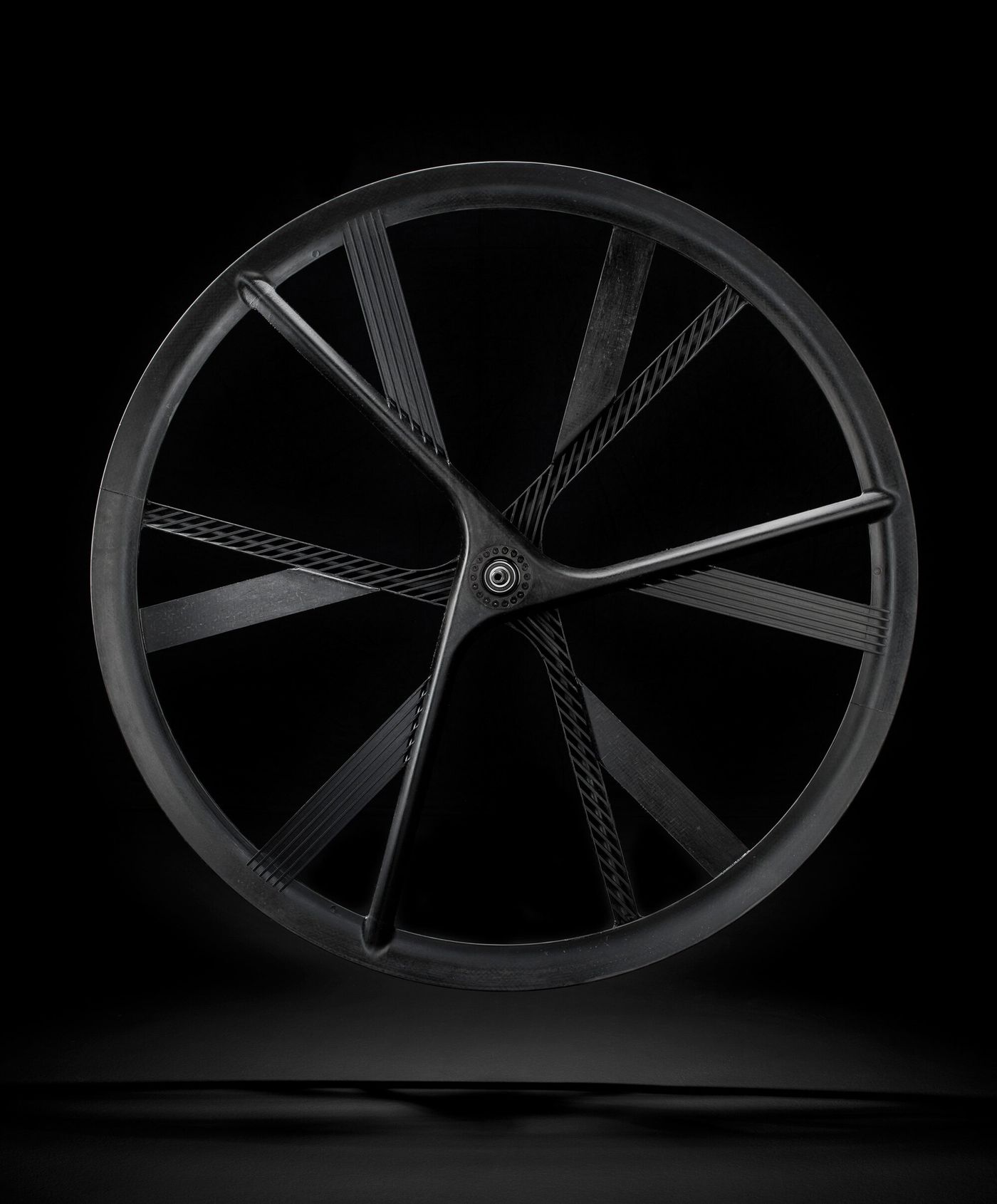
Front wheel, Concept 1865, photo © Rafael Kroetz.
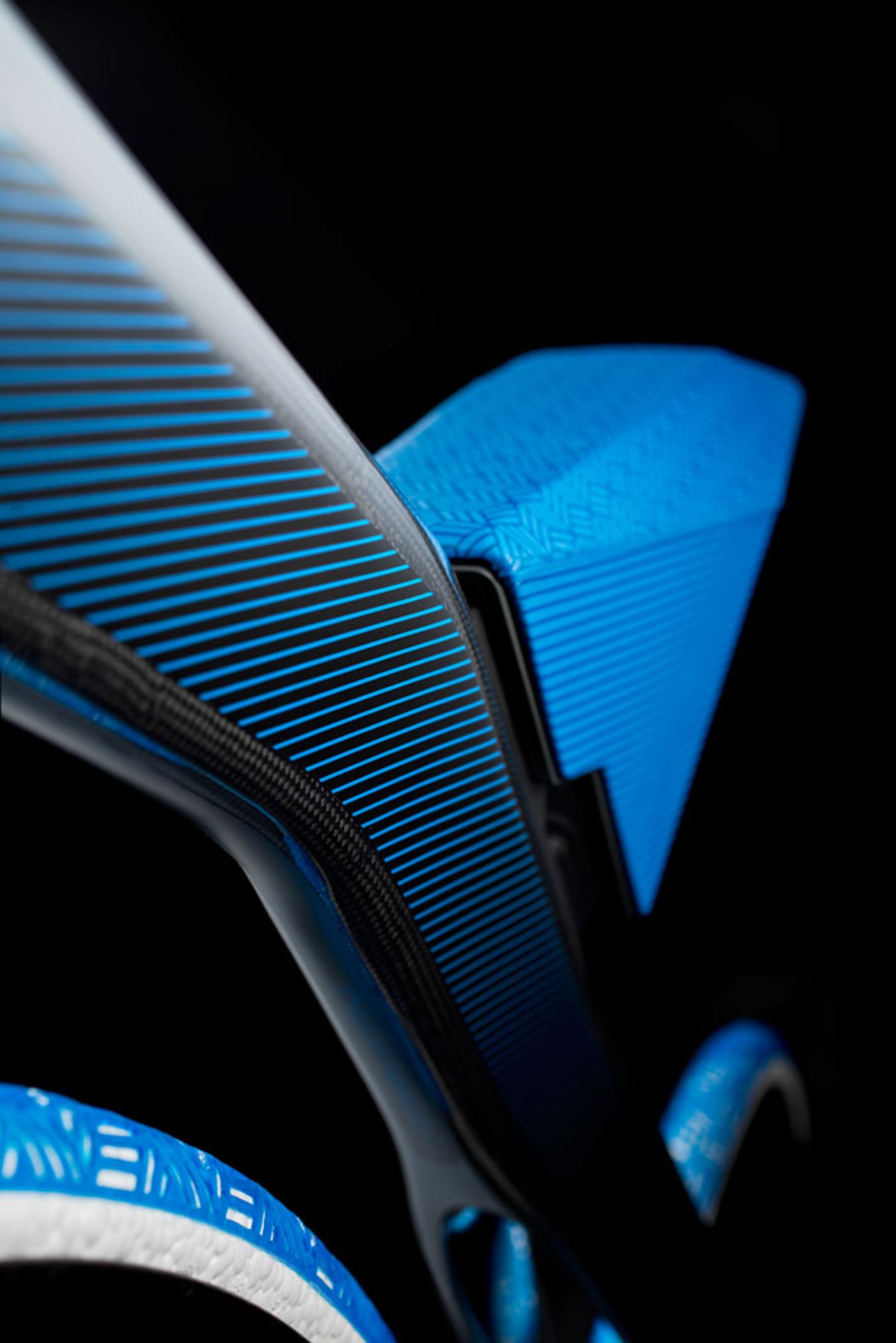
The graphics on the frame, Concept 1865, photo © Rafael Kroetz.
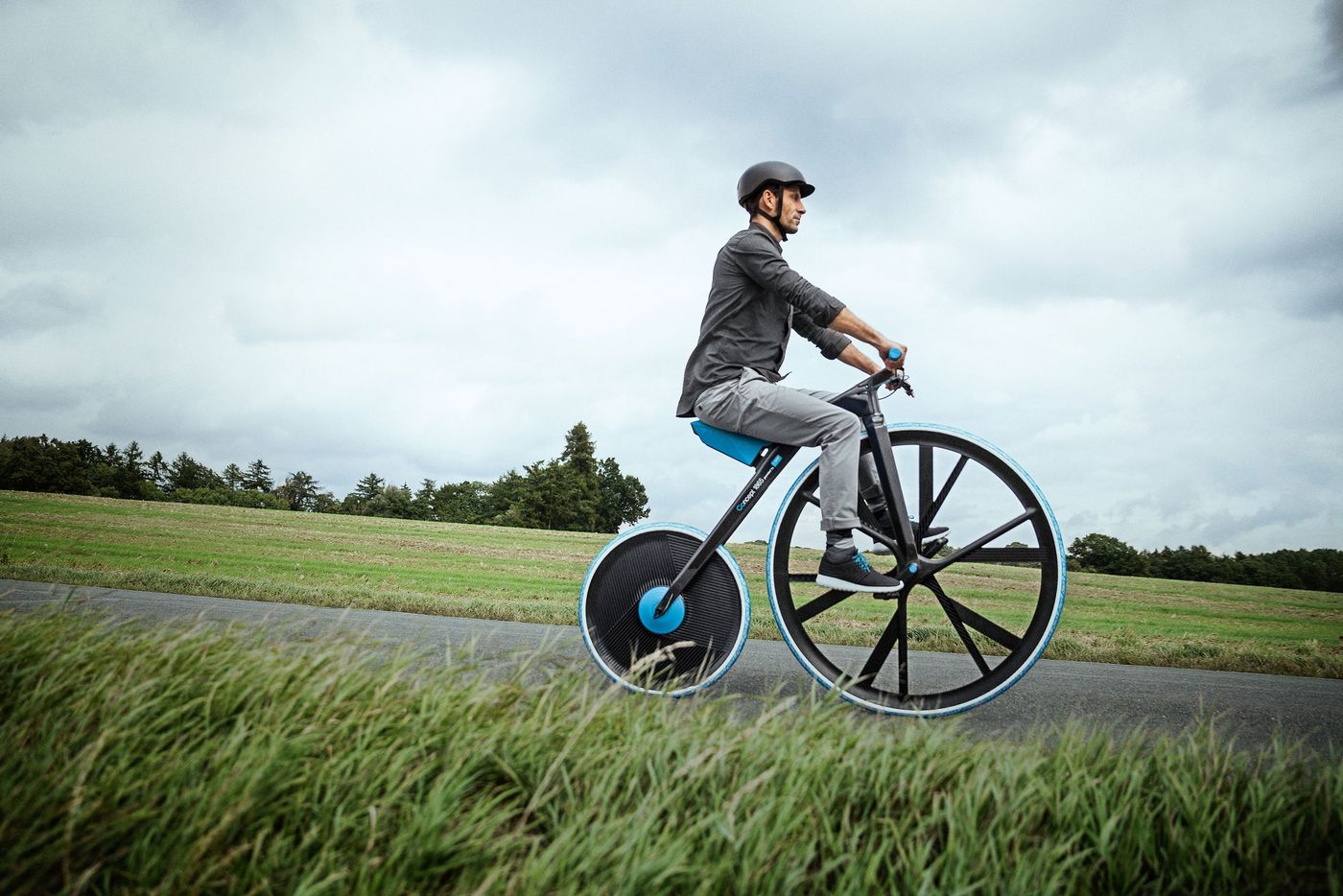
''Concept 1865-Rethinking Materials''. Filmstill by Nord Nord.

Concept 1865, photo © Rafael Kroetz.

